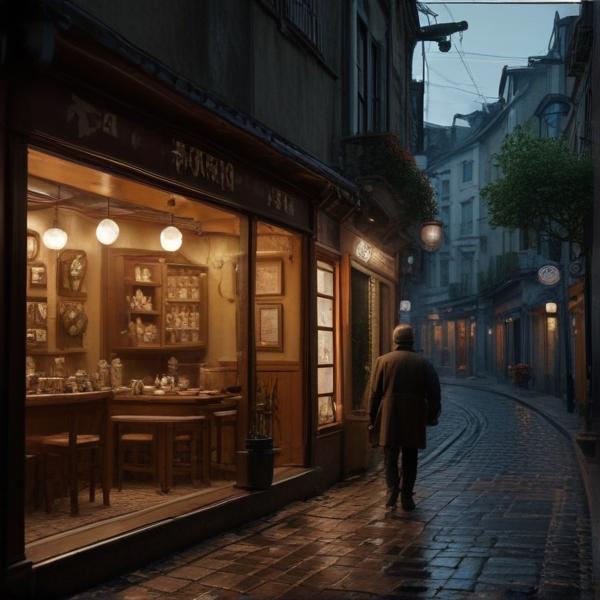基本信息 (Basic Information)
含义与用法 (Meanings & Usage)
中文核心释义 (Core Chinese Meaning): 画,描画图像、作品或线条;图画。
英文核心释义 (Core English Meaning): to draw, to paint; drawing, painting, picture.
象形意义 / 为何这么写 (Pictographic Meaning / Writing Rationale)
文言文释义 (Classical Chinese Meaning)
与现代意义相近,主要表示‘描画’、‘描写’等。Similar to modern meaning, mainly indicating 'to delineate', 'to depict', or 'to draw'.
深入学习 (In-depth Study)
字源故事 (Origin Story)
字形演变 (Character Evolution)
常用词语和例句 (Common Words & Examples)
画家 (painter, artist)
他是一位著名的画家。
Eng: He is a famous painter.
画画 (to draw, to paint)
小明喜欢画画。
Eng: Xiaoming likes to draw.
画册 (picture album)
我买了一本精美的画册。
Eng: I bought a beautifully illustrated picture album.
相关成语 (Related Idioms)
画蛇添足
Meaning: to ruin something by overdoing it; to gild the lily (literally: to draw a snake and add feet)
多语言翻译 (核心释义) (Translations (Core Meaning))
- French: dessiner, peinture, dessin
- German: malen, zeichnen, Bild
- Spanish: dibujar, pintura, cuadro
- Italian: disegnare, dipinto, quadro
- Portuguese: desenhar, pintura, quadro
- Russian: рисовать, картина
- Arabic: رسم، لوحة
- Persian: نقاشی، رسم، تصویر
- Dutch: tekenen, schilderij, schilderen
- Polish: rysować, obraz, malować
- Vietnamese: vẽ, tranh, bức tranh
- Ukrainian: малювати, картина
视频学习资源 (Video Learning Resources)
通过以下链接在热门视频网站搜索 "画" 的更多讲解:
Search for more explanations of "画" on popular video sites:
- 在 Bilibili.com 搜索 "画 字源 说文解字" (Search on Bilibili)
- 在 YouTube.com 搜索 "画 character origin etymology" (Search on YouTube)
网络参考 (Web References for "画") ()
网络内容摘要 (Web Content Summary):
```html画(huà)的核心含义是“用笔在纸上作图”或“一幅图画”。 画 (huà) mainly means "to draw" or "a picture/painting".
- 象形起源: “画”本为会意字,古代字形像一支手持毛笔在描线条,体现出用工具描绘形象的动作。 Pictographic origin: "画" is an ideographic compound character; ancient forms resembled a hand using a brush to draw lines, showing the act of drawing.
- 常见用法:常用作动词,例如“画画”(to draw/paint),也可作名词,如“一幅画”(a painting)。与“划”易混淆,后者意为“cut”或“划分”。 Common usage: As a verb, e.g. "画画" (to draw/paint); as a noun, e.g. "一幅画" (a painting). Easily confused with "划" (huá, to cut/draw a line/row), but the meanings are different.
- 常见词/成语: 如“画家”(painter, artist)、“画面”(picture/screen)。常用成语有“画蛇添足”(ruin something by overdoing it, lit. "draw legs on a snake")。 Common words/idioms: e.g., "画家" (painter/artist), "画面" (picture/scene). Idiom: "画蛇添足" (ruin something by adding unnecessary detail, literally "draw legs on a snake").
文化背景: "画" 在中国艺术中地位重要,体现了中国书画的结合,也是汉字艺术性质的代表之一。 Cultural background: "画" holds an important position in Chinese art, symbolizing the integration of calligraphy and painting, and is a representative character in Chinese art culture.
注:由于原始资料有限,当前内容为基本知识整合,进一步权威信息需查阅专业汉字字源辞典。 Note: Due to limited source information, only essential knowledge is provided here. For more details, consult authoritative Chinese etymology dictionaries.
```画字形演变字源_汉字「画」_画的甲骨文_画的金文_金文编_甲骨文编
查看本页字形参考书目及简称含义 查看更多关于: [ 画 ] 的资料,近60部工具书。
汉字"画"的起源、演变过程-汉字字源辞典
汉字字源辞典收录686条汉字词条,基本涵盖了常见汉字的字源解析,是汉字研究的必备工具。
更多图片 (画 More Images) ()
